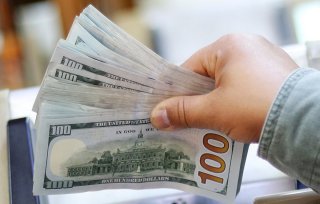Missing Your $1,400 Stimulus Check? You Still Might Be Able to Cash In.
For those who fit into this unfortunate category, keep in mind that they can still try to claim the money that they’re legally entitled to from the U.S. government. For this particular tax season, a Recovery Rebate Credit has been added to all returns, so that people mired in this situation can eventually get their hands on the overdue payments.
Missing Stimulus Checks? Here’s How to Claim Them on Your Tax Return
By Ethen Kim Lieser
Under the $1.9 trillion American Rescue Plan, the Internal Revenue Service and U.S. Treasury announced via their latest update that one hundred fifty-six million coronavirus stimulus checks have been disbursed to cash-strapped Americans.
While millions of Americans already have seen the payments direct deposited into their respective accounts, there are still plenty of financially struggling taxpayers who have been left on the sidelines.
For those who fit into this unfortunate category, keep in mind that they can still try to claim the money that they’re legally entitled to from the U.S. government. For this particular tax season, a Recovery Rebate Credit has been added to all returns, so that people mired in this situation can eventually get their hands on the overdue payments.
According to the IRS website, it states that “if you didn’t get any payments or got less than the full amounts, you may qualify for the Recovery Rebate Credit and must file a 2020 tax return to claim the credit even if you don’t normally file.”
The agency advises that individuals keep the form they receive regarding their stimulus payment and refer to it when filing their tax returns.
Also, some people reportedly have gotten a confirmation letter (Notice 1444 or Notice 1444-B) from the IRS stating that their payment was issued even though they have yet to receive it. In this situation, the affected individuals can request an IRS payment trace.
In order to request this payment trace, first call the IRS at 800-919-9835 or mail or fax a completed Form 3911, “Taxpayer Statement Regarding Refund.” Make sure to set aside some time to complete this process because many have been left on hold for a considerable amount of time. If the trace request was done via phone, then know that one does not have to fill out Form 3911.
According to the agency, here’s the best way to complete Form 3911. First, make sure to write “EIP3” on the top of the form, then fill out the form answering all of the refund question as they relate to the missing stimulus payment.
When one reaches item seven under section one, be sure to check the box for “Individual” as the type of return. For “Date Filed,” leave that blank and then sign the form. Finally, keep in mind that for those who are married and filing together, both spouses must sign the form.
Also, be aware for the current batch of stimulus checks, it is the first one that includes “plus-up” or supplemental payments for those who only received partial $1,400 payments on an earlier date.
“This batch includes the first of ongoing supplemental payments for people who earlier in March received payments based on their 2019 tax returns but are eligible for a new or larger payment based on their recently processed 2020 tax returns,” the IRS said in a statement, adding that these checks will continue to go out on a weekly basis going forward.
“These ‘plus-up’ payments could include a situation where a person’s income dropped in 2020 compared to 2019, or a person had a new child or dependent on their 2020 tax return, and other situations.”
Ethen Kim Lieser is a Minneapolis-based Science and Tech Editor who has held posts at Google, The Korea Herald, Lincoln Journal Star, AsianWeek, and Arirang TV. Follow or contact him on LinkedIn.

